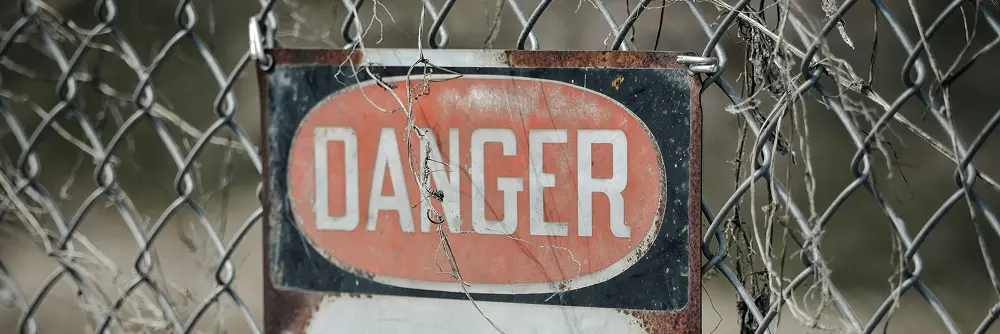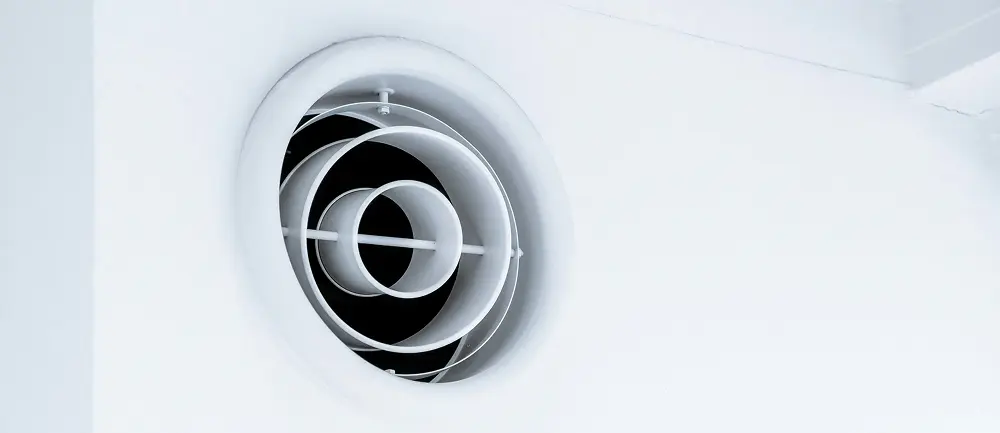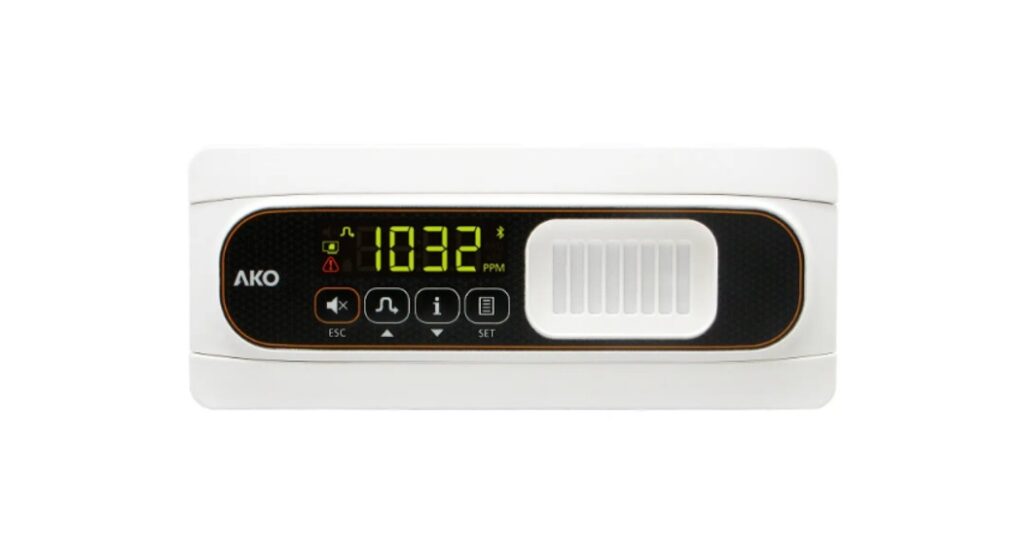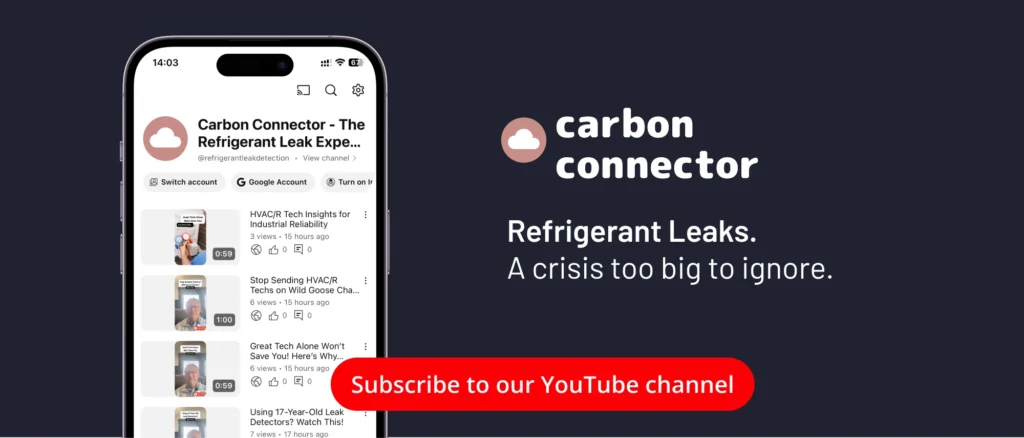
Understanding the Real Cost of a Refrigerant Leak Budget
Table of Contents
ToggleWhen a Tiny Refrigeration or HVAC Leak Becomes a Million-Dollar Sinkhole and How Policy Turns Drips into Budget Disasters.
How EPA’s Rigid Analyses and CBO’s Constraints Leave Budget Managers Exposed to Unbudgeted Capital Shocks, Strategic Landmines, and Energy Efficiency Challenges.
Budget season is underway, whether it’s the Federal, State, or Corporate budgets; we are all working to predict future spending for 2026.
It’s incredibly hard right now, with tariffs, material shortages, and uncertain supply needs based on the transition to new tech across the entire HVAC/R spectrum.
I spent a few hours reviewing EPA documents related to the AIM Act, and also the Congressional Budget Office (CBO) review of the AIM Act.
I was surprised that the CBO did not do a review; this responsibility was left to the EPA to conduct, but don’t worry, they had lots of guidance via the regulatory oversight of a joint Committee from the Senate.
The EPA’s financial impact study correctly modeled baseline refrigerant usage, estimated incremental compliance costs, and monetized climate benefits using the social cost of greenhouse gases
But it did not account for:
- Real-world CO₂ conversion expenses,
- Tariffs,
- Inflation,
- Labor shortages,
- Repeated leaks that shorten equipment life,
- Forced replacements after regulatory thresholds are breached,
- Price volatility for reclaimed refrigerants,
- The hidden costs of downtime and compliance penalties.
These gaps turn out to be the same ones that the private market also seems to skip or miss when planning their budgets.
🧑🏻💻 Watch Our Free Webinar
Don’t let outdated budgeting models put your operations at risk. Join industry experts as we break down how current and future HVAC/R regulations can drastically impact your capital planning.

Introduction
The Policy-Engineered Financial Sinkhole affecting cooling systems
For too long, a refrigerant leak was viewed as a minor operational drip – a predictable, manageable expense of replacing lost gas. This perspective is catastrophically outdated.
In the era defined by the American Innovation and Manufacturing (AIM) Act, federal policy isn’t just regulating refrigerants; it’s actively engineering a financial sinkhole that even a skilled HVAC technician would find daunting. that can swallow your budget whole.
Regulatory Policy, if ignored, can transform what is often considered an operational inconvenience into a direct financial disaster. Every refrigerant leak now carries the magnified risk of:
- Forcing unbudgeted capital expenditures
through aggressively accelerated asset depreciation and full unit replacement.
- Triggering mandatory AIM Act compliance obligations
that escalate minor issues into complex, costly regulatory burdens and potential penalties that air conditioning contractors must navigate.
- Unleashing unbudgeted refrigerant expense
that, as we will demonstrate, can quickly swell from a few dollars per pound to tens of thousands of dollars per pound in true cost, devastating your financial predictability.
💧 Turning an ordinary refrigerant leak (the “drip”) into an unforeseen, budget-devouring catastrophe affecting the refrigeration process (the “million-dollar sinkhole”)
After hundreds of interactions with managers preparing budgets, I realize that the refrigerant leak trigger point that forces a system to be replaced is unknown.
It’s not just unknown or misunderstood at the operational level, but also at the federal and state levels, and the proof of this is the omission from the EPA’s financial impact and the same from any Congressional Budget Office predictions in either the static or the dynamic modeling.
A refrigerant leak has several components and escalation triggers that often go unrecognized.
This gap will explicitly expose how policy decisions—from the inherent structure of EPA’s Regulatory Impact Analyses (RIAs) to Congressional Budget Office (CBO) constraints—deliberately omit or downplay critical cost factors, thereby turning an ordinary refrigerant leak (the “drip”) into an unforeseen, budget-devouring catastrophe affecting the refrigeration process (the “million-dollar sinkhole”).
We will prove why proactive leak detection, better tracking, and an understanding of policy’s financial implications are now the only defenses for sound refrigerant budget planning and asset lifecycle management.
It is also essential to recognize the critical role that HVAC engineers play in this landscape.
Licensed or certified HVAC engineers ensure compliance with industry standards such as ASHRAE and local building codes, and their expertise is vital in designing, installing, and overseeing HVAC systems to support effective refrigerant budget planning and regulatory adherence.
These team members, whether they are a direct report or a 3rd party contracted, are the trained and educated regulatory frontline.
🧑🏻💻 Watch Our Free Webinar
Don’t let outdated budgeting models put your operations at risk. Join industry experts as we break down how current and future HVAC/R regulations can drastically impact your capital planning.

The Hidden Dangers Lurking in Your HVAC System
Your refrigeration and air conditioning system is more than just a source of cool air and safe food, or free-flowing data—it’s a sophisticated network of components designed to maintain a constant temperature and deliver clean, comfortable air to your space.
Yet, beneath the surface, hidden dangers can threaten both your comfort and your bottom line. One of the most insidious threats is a refrigerant gas leak.
Even a small leak can disrupt the delicate balance of the refrigeration cycle, causing your air conditioning system to work harder, consume more energy, and drive up your energy bills.
Left unchecked, these leaks can also pose environmental hazards and lead to costly repairs or even full system replacement.
Understanding how your HVAC systems operate—and the risks that come with neglecting regular maintenance—is the first step in protecting your investment and ensuring reliable performance year-round.
Comfort air conditioning systems come in various types, including split systems and packaged systems.
A split system features an indoor unit, which distributes conditioned room air, and an outdoor unit, which houses the condenser or heat pump.
Split systems and AC units often use air filters and sometimes air cleaners to maintain indoor air quality, especially in multi-zone setups with multiple indoor units.
Mechanical ventilation is also essential for exchanging stale air with fresh air, helping to ensure comfort, health, and proper indoor air quality.
🧊 Make Refrigerants Count. Before They’re Counted Against You.
Understanding the Refrigeration Cycle: The Science Behind the Drip
At the heart of every refrigeration or air conditioning system lies the cooling cycle—a continuous process that makes modern comfort possible.
This cycle relies on the movement of refrigerant gas through key components: the evaporator coil, compressor, condenser coil, and expansion valve.
As liquid refrigerant flows through the evaporator coil, it absorbs heat from the indoor air, transforming into a vapor.
The compressor then pressurizes this refrigerant vapor, which releases heat outside as it condenses back into a liquid.
This vapor compression cycle is the foundation of efficient heat transfer, allowing your air conditioning systems to maintain a desired temperature indoors. However, when a refrigerant gas leak occurs, the system loses its ability to absorb and transfer heat effectively.
This not only reduces cooling capacity and energy efficiency but also leads to higher energy bills and increased wear on system components.
Regular inspections and maintenance by skilled HVAC professionals are essential to detect leaks early, maintain optimal refrigerant flow, and ensure your air conditioning system operates at peak performance.
A key part of the refrigeration cycle is the metering device, which controls the flow of refrigerant and creates a low-pressure area in the evaporator, allowing the refrigerant to absorb heat energy efficiently. After leaving the evaporator, the refrigerant enters the compressor, where it is raised to high pressure and a higher temperature before moving to the condenser.
This process extracts heat from indoor air and removes heat to the outside, relying on the fundamental principle of transferring heat.

Mechanical refrigeration systems use these components to move heat energy, and heat pumps and heat pump systems offer energy-efficient alternatives that can both heat and cool by using different heat sources, such as air, water, or the earth’s surface.
Some systems use chilled water or heated water to transfer or heat water throughout a building, while sheet metal is commonly used in ductwork and fan components.
The capacity of these systems is measured in British thermal units (BTUs), which is the amount of heat required to raise the temperature of one pound of water by one degree Fahrenheit.
Geothermal systems, for example, use the stable temperature below the Earth’s surface as a heat source or sink, providing significant energy savings.
Most refrigeration systems are field assembled, and although HVAC or comfort cooling systems can often be “packaged”, and they tend to leak less, they do leak.
Remember, these are sitting on a roof or in a basement or a ceiling area that’s warm, so they are in direct sun, direct cold, and they have belts that warp and panels that corrode, and they are susceptible to CO2 car emissions, from roadways, and damage from the elements.
There are 5 funding steps in the lifecycle of HVAC and Refrigeration, including:
Installation
Everyone gets that installs are straightforward pricing, and the rule of thumb here is that most units last for 20 years, but keep in mind that if you ask the manufacturer, they suggest 10, so you are already stretching the life cycle to 2x its projected life = per the manufacturer.
This is CAPEX funded.
The Warranty work
Usually also underfunded, and directed by the purchasing department.
The purchasing department does its best to work its magic and get the suppliers to promise a bunch of things, but those things usually come attached to other conditions.
For instance, an annual or even quarterly oil test may be required.
This is usually CAPEX funded.
Routine or Preventive Maintenance
This is the most difficult budget number to nail down.
This function is the smallest share of the budget availability and the one that gets the least attention and usually is the least well-understood aspect of budgeting.
For instance, most people look at last year’s budget, and then use that number mgmt. will let the ops team know that they only have a small budget (usually less than 15% of the overall maintenance budget devoted to this segment).
This is an opex expense that gets squeezed by the needs of the Break / Fix budget demands. It is the most controllable part of the budget, but usually the least likely to be applied.
Think of this section as the Strategy part of a maintenance budget.
🔔 Ding ding ding. This is the big money section, and 85% of most maintenance budgets are spent here.
Break Fix
This is the emergency and trauma section of our work world. There are studies from the Navy, the Air Force, and the healthcare industry, all highlighting missed opportunities in prevention and the need to avoid catastrophic failure to optimize budget spend and operational goals.
Some companies try and apply them and make incremental investments in their maintenance spend to gather more data and use that data to re-deploy resources, but they come up short.
One industry that has succeeded is Pharma, and Accenture did a nice study on the impacts in that space and how maintenance maturity benefited from bottom line and investment.
Keep in mind that if the age of your installed systems is 7 years on average, then you might spend x, if it’s 15, you might spend 2 times that, and if it’s 20 years old, then you might spend 3 times that.
Also, I have worked with finance people and environmental budget professionals who assume that if a unit is newer than 5 years, it doesn’t need maintenance – this is also not true.
End of Life
Believe it or not, this segment is often underfunded.
It seems hard to believe that when a unit fails, you don’t remove it – this is shocking to me, but it happens every day.
A unit on a roof fails, a new one is put in, and if the new one requires a new shroud or connection, then very often the old one gets left behind and is still there years or even decades later.
But this segment needs attention; it can be part of CAPEX or OPEX, but when purchasing is dealing with finance to replace a failed unit, this is where the budgets often get squeezed, and finance will leave this appliance stranded rather than pay the cost to remove it.
They are not just physically stranded; they are stranded in documentation.
I once surveyed a university that had asked me to survey more than 600 rooftop units. Turned out that yes, they had 600, but about 400 of these HAVC & Refrigeration units were offline, broken, decommissioned, or non-existent.
This leaves a liability on the roof and misapplied depreciation opportunity, and causes tremendous confusion in the operations and maintenance group.
It’s not about the leak, but it’s about the leak.
A leak isn’t just about a few pounds of lost gas. It’s a trigger that can accelerate failure, drain budgets, and expose hidden liabilities across all five funding stages.
Consistent inspection, accurate tracking, and proactive maintenance are the only ways to keep the cycle efficient—and your financial exposure under control.
Recently, I worked with one firm, they were trying to get their budget dialed in, and when I asked how they were profiling budget projections, they shared that they only replaced units when they broke or failed.
We did a study and their equipment age and vintage was over 18 years, and they had not determined how to evaluate when a system had completely failed, for instance if a motor went bad they replaced it, even though some of these units were 28 years old and fully depreciated (based on their internal financial profile).
We found that the cost to maintain these older stores was costing more and more, but the budget had remained stagnant for 11 years.
So they were budgeting the same amount on this store in 2025 as they were in 2014, but they were spending 2x that amount, due to the age and the budget and spend cycles were out of sync.
So this store was draining the budget, but the issues were not being addressed.
Now it’s important to point out that the maintenance team knew this, but they were being ignored.
🧑🏻💻 Watch Our Free Webinar
Don’t let outdated budgeting models put your operations at risk. Join industry experts as we break down how current and future HVAC/R regulations can drastically impact your capital planning.
Refrigerant Leak Detection: The First Line of Defense
Refrigerant leak detection is the cornerstone of maintaining high-performing air conditioning systems that require constant pressure. and refrigeration systems.
When refrigerant leaks go unnoticed, they disrupt the refrigeration cycle, causing a drop in cooling capacity, increased energy consumption, and higher energy bills.
That’s why proactive leak detection isn’t just a technical best practice—it’s a financial and environmental imperative.
📌 Proactive leak detection isn’t just a technical best practice. It’s a financial and environmental imperative.
Modern air conditioning systems rely on a closed cycle of refrigerant flow, where liquid refrigerant absorbs heat and then releases it as it cycles between the indoor and outdoor units.
Any breach in the refrigerant lines can compromise this closed cycle, leading to a loss of efficiency and potential system failure.
To prevent these issues, HVAC professionals use a range of leak detection methods:
Electronic Leak Detection
Advanced sensors can pick up even trace amounts of refrigerant gas, making it possible to identify tiny leaks before they escalate. This method is especially valuable for complex or hard-to-reach areas within the system.
Pressure Testing
By monitoring the system’s pressure stability, technicians can quickly spot drops that indicate a leak, ensuring the refrigeration system maintains optimal performance.
Dye Testing
A fluorescent dye is added to the liquid refrigerant, allowing technicians to visually trace leaks along the refrigerant lines and components.

Regular leak detection not only helps maintain the desired temperature and comfort levels but also protects your investment by reducing the risk of major repairs or system replacement.
By catching leaks early, you can keep your air conditioning system running efficiently, minimize energy consumption, and avoid the budget shocks that come with emergency repairs or compliance penalties.
In today’s regulatory environment, integrating leak detection into your maintenance plan is the first—and most cost-effective—line of defense against the hidden costs of refrigerant loss.
When Drips Become Disasters: Detailed Budgetary Impact Driven by Policy Triggers
| Aspect | Policy-Driven EPA RIA Model Approach | Real-World Budgetary Imperative Driven by Policy Outcome |
|---|---|---|
| Refrigerant Price | R-404A: $20–$30/lb R-410A: $20–$30/lb | R-404A: $40/lb R-410A: $100/lb (Current Market Reality Post-Phasedown Policy) |
| Labor Cost | Standard BLS averages | Scarcity premiums, overtime for specialized HFC/HFO technicians (Policy-induced skill gap) |
| Leak Rate Improvement | Assumed steady gains via “best practices” (Policy aspiration) | Actual rates remain stubbornly high, demanding active refrigerant leak management |
| Replacement Cost | $50–$300k incremental (HFC-to-HFC, Policy-preferred path) | R-404A: $2M for full unit replacement; R-410A: $50K for full unit replacement (Policy-driven obsolescence) |
| Dynamic Factors | Excluded (currency swings, pandemics, geopolitics – Policy limitation) | Constant risk of supply shocks, inflation, and unbudgeted expense (Policy’s “unforeseen” consequences) |
No two leaks are the same; there are two leaks, one that is below the threshold and the other above the threshold.
If it’s a below-the-threshold leak, costs are lower, but if the leak enters a threshold where it cannot be fixed promptly and is above a certain point, then it triggers massive expenses related to replacement instead of repair.
Our analysis, leveraging current market prices and your specified system parameters, reveals the stark truth: policy-defined leak thresholds are the critical junctures where a seemingly minor “drip” transforms into a colossal “financial sinkhole.”
This underscores why vigilant leak detection and better tracking are your only defenses against policy-engineered budget disasters.
R-404A Refrigeration System (100 lbs Total Charge)
R-404A is a widely used refrigerant in commercial and industrial air conditioning systems, prized for its robust cooling capacity and reliability in demanding environments.
Systems charged with 100 lbs of R-404A are common in supermarkets, cold storage, and large-scale cooling equipment, where maintaining a constant temperature is critical for product safety and operational efficiency.
However, R-404A’s high global warming potential (GWP) means that even small leaks can have significant environmental consequences.
That’s why regular maintenance and thorough inspections are essential—not only to preserve the cooling capacity and energy efficiency of your air conditioning systems but also to ensure compliance with environmental regulations.
Proper handling, leak prevention, and responsible disposal of R-404A are now industry standards, helping organizations reduce their carbon footprint while protecting their bottom line.
By prioritizing leak detection and system integrity, you can maximize the performance of your refrigeration system and avoid the escalating costs and liabilities associated with refrigerant loss.
This common system size dramatically illustrates how quickly a policy-defined leak rate can escalate into a significant unbudgeted refrigerant expense, turning a drip into a major budgetary challenge for refrigerant budget planning.
| Scenario Type | Leak Size | % of Charge | Policy- Driven EPA Assumption (RIA) | Real-World Budgetary Impact (Unbudgeted Risk) | Effective $/lb | Policy- Driven Financial Outcome |
|---|---|---|---|---|---|---|
| Below Threshold | 10 lbs | 10% | Routine repair; no forced replacement | Refrigerant: 10 × $40 = $400 Labor: $2,500 Energy Loss: $1,500 | $440/lb | Hidden Operational Erosion & Cumulative Liability |
| Above Threshold | 25 lbs | 25% | Repair plan required; no replacement modeled | Refrigerant: 25 × $40 = $1,000 Labor: $3,000 Energy Loss: $2,000 Full Unit Replacement: $2,000,000 | $80,240/lb | Catastrophic Capital Event & Major Compliance Burden |
🧑🏻💻 Watch Our Free Webinar
Don’t let outdated budgeting models put your operations at risk. Join industry experts as we break down how current and future HVAC/R regulations can drastically impact your capital planning.
The Refrigeration Walkthrough—R-404A Budget Impact
10% Leak (10 lbs) – The Stealthy Drip Leading to Budget Erosion (Below Policy Trigger)
A 10-pound loss, though below the 20% EPA annual leak rate threshold for refrigeration systems, is still a budget drain.
The immediate cost is $4,400. When this is applied to just 10 pounds of lost refrigerant, the effective cost per pound is a staggering $440/lb.
This scenario explicitly shows how policy, by focusing on larger thresholds, can create a false sense of security.
These “minor” drips, if unmanaged, accumulate into significant unbudgeted refrigerant expense and erode operational budgets, resulting in a Policy-Driven Financial Outcome of Hidden Operational Erosion & Cumulative Liability.
It underscores the critical need for proactive HVAC leak repair and better tracking to prevent these silent, costly drips from multiplying.
25% Leak (25 lbs) – Where Policy Turns a Drip into a Multi-Million Dollar Sinkhole (Above Policy Trigger)
This leak exceeds the 20% policy-defined threshold, immediately triggering mandatory AIM Act compliance for repair plans and strict documentation.
While the EPA’s RIA might conceptualize this as a repair event, real-world experience shows that a 25% annual leak rate in a system of this type often signifies catastrophic failure, forcing the full unit replacement.
This translates directly into an unbudgeted $2,000,000 capital expenditure.
Including this, the effective cost per pound skyrockets to over $80,000/lb—a massive, unforeseen capital disaster that policy inadvertently compels.
This is the financial impact of leaks made chillingly real, culminating in a Policy-Driven Financial Outcome of Catastrophic Capital Event & Major Compliance Burden that demands urgent refrigerant leak management and immediate, proactive refrigerant budget planning.
R-410A Rooftop HVAC (40 lbs Total Charge)
With R-410A now at $100/lb, every refrigerant leak is a severe financial event, directly compounded by policy triggers, making vigilant leak detection paramount for refrigerant budget planning.
| Scenario Type | Leak Size | % of Charge | Policy- Driven EPA Assumption (RIA) | Real-World Budgetary Impact (Unbudgeted Risk) | Effective $/lb | Policy- Driven Financial Outcome |
|---|---|---|---|---|---|---|
| Below Threshold | 4 lbs | 10% | Routine maintenance; mandatory repair plan needed | Refrigerant: 4 × $100 = $400 Labor: $600 Energy Loss: $250 | $313/lb | Immediate Compliance Trigger & Operational Cost Escalation |
| Above Threshold | 8 lbs | 20% | Mandatory repair plan; no replacement modeled | Refrigerant: 8 × $100 = $800 Labor: $1,200 Energy Loss: $500 Full Unit Replacement: $50,000 | $6,563/lb | Forced Capital Event & Escalated Compliance Risk |
The Story Behind Related to HVAC and Comfort Cooling — R-410A Budget Impact
10% Leak (4 lbs) – At the Policy Threshold, Immediate Financial Action (Below Policy Trigger)
Losing 4 pounds from a 40-pound rooftop HVAC system hits the 10% EPA threshold for comfort cooling, mandating a repair plan within 30 days.
📋 This is a direct policy trigger with immediate financial consequences.
The total immediate cost is $1,250. With R-410A at $100/lb, the effective cost is $313/lb.
This scenario explicitly demonstrates how a policy-defined percentage, even for a seemingly small refrigerant leak, compels immediate action and impacts your operational budget.
The Policy-Driven Financial Outcome is an Immediate Compliance Trigger & Operational Cost Escalation, necessitating diligent HVAC leak repair and meticulous better tracking to avoid further escalation.
20% Leak (8 lbs) – Policy-Driven Disaster: The Capital Sinkhole Widens (Above Policy Trigger)
An 8-pound loss doubles the policy-defined threshold for HVAC systems, demanding urgent action.
While policy mandates repair, chronic leaks at this level often force operators to prioritize early system replacement to avoid repeated violations and operational headaches.
This proactive replacement, a direct response to policy pressure and increasing environmental compliance costs, results in an unbudgeted $50,000 capital expenditure for the full unit replacement.
This pushes the effective cost per pound to a staggering $6,563/lb.
For refrigerant budget planning, this means recognizing that policy, by setting thresholds and driving HFC phasedown, directly leads to a Policy-Driven Financial Outcome of Forced Capital Event & Escalated Compliance Risk if leak detection isn’t paramount.
This is the moment a tiny drip becomes a significant sinkhole.
The Policy Trap: How EPA and CBO Frameworks Turn Technical Issues into Financial Nightmares
💰 Routine technical issues—like a refrigerant leak—can turn into major financial headaches due to regulatory requirements.
While technical expertise is crucial for maintaining HVAC systems, understanding the regulatory landscape is equally important.
The EPA sets standards for the energy efficiency ratio (EER) and mandates compliance with environmental regulations, while the CBO evaluates the economic impact of these policies.
However, these frameworks can inadvertently turn routine technical issues—like a refrigerant leak—into major financial headaches.
For example, if your system leaks above a certain amount, you may be forced into a costly system replacement, even if the existing equipment is still functional or even has depreciation remaining on the books, essentially forcing equipment to be prematurely removed from your balance sheet.
The CBO’s cost-benefit analyses often underestimate the true costs of compliance, leaving businesses and homeowners unprepared for the financial impact.
In the rapidly evolving HVAC industry, staying ahead of policy changes and understanding their implications is essential for effective budgeting and long-term asset management.
🧑🏻💻 Watch Our Free Webinar
Don’t let outdated budgeting models put your operations at risk. Join industry experts as we break down how current and future HVAC/R regulations can drastically impact your capital planning.
The Domino Effect: From Drip to Disaster
A minor refrigerant gas leak might seem like a small inconvenience—just a few pounds lost here and there.
But, in reality, even a modest leak sets off a domino chain reaction that can spiral into a costly, compliance-laden crisis if left unchecked. Here’s how the dominoes fall:
Loss of Refrigerant Charge
As refrigerant escapes, the system’s capacity to absorb and move heat steadily declines. What starts as a slight performance dip soon becomes noticeable temperature fluctuations and longer run times.
Compensatory Strain on Equipment
To maintain setpoints, compressors, and fans are forced to work harder and cycle more frequently. This extra workload drives up your energy bills, increases peak demand charges, and accelerates wear on mechanical components.
Reduced Efficiency and Rising Costs
Over time, the system becomes less efficient, consuming more electricity to deliver less cooling or heating.
Even a 10–15% loss of charge can degrade performance by 20% or more, costing thousands in wasted energy each year.
Accelerated Mechanical Failures
Persistent strain leads to overheating, lubricant breakdown, and premature failure of critical components like compressors, valves, and motors. When this happens, you’re no longer dealing with a routine service call—now you’re facing an expensive break/fix event or total system replacement years before budgeted.
Regulatory and Environmental Risks
Unchecked leaks don’t just impact your balance sheet—they can also trigger regulatory non-compliance under EPA Section 608 or AIM Act provisions. Release of high-GWP refrigerants contributes to climate change and, in some cases, ozone depletion. This carries reputational risk and potential fines.
Unplanned Capital Expenditure:
If a system fails due to chronic leaks, you’re suddenly forced into unplanned capital spending. Whether it’s a $15,000 rooftop replacement or a $3–$4 million refrigeration retrofit, these costs are often outside normal budget cycles and can derail broader capital planning.
Operational Disruption and Liability (where does this show up in your budget?)
Emergency replacements lead to downtime, lost product (especially in food environments), customer dissatisfaction, and sometimes legal exposure if safety thresholds are breached.

Why This Domino Effect Matters
A single refrigerant leak sets all these consequences in motion. What starts as a drip can end as a disaster—an avoidable event that drains budgets, damages equipment, and exposes your organization to compliance risks.
The only way to break this chain reaction is with disciplined, proactive intervention:
- Regular inspections by skilled HVAC and refrigeration professionals
- Accurate tracking of leak rates and refrigerant usage
- Rapid repairs to restore charge and protect equipment
- Budgeting for prevention—not just reaction
🁒 If you ignore the first domino, you won’t like how the last one falls.
Staying ahead of leaks isn’t just maintenance—it’s strategic protection for your assets, your compliance posture, and your financial predictability.
Budgeting for the Unknown: Why Traditional Approaches Fail
Traditional budgeting for HVAC and refrigeration maintenance usually follows a predictable pattern:
- Allocate funds for routine service visits, filter changes, and minor part replacements.
- Set aside a contingency for occasional repairs.
- Defer major capital expenses until equipment reaches the end of its “expected” lifespan.
While this approach may look tidy on a spreadsheet, it’s dangerously incomplete. It fails to account for the hidden, volatile, and often cascading costs that can arise when leaks go undetected or systems age faster than planned.
Here’s why traditional budgeting falls short—and what modern managers need to recognize:

The Myth of Predictability
Most budgets assume equipment will perform consistently until a known replacement date.
But reality is far messier. Refrigerant leaks, component wear, and environmental damage can abruptly shorten system life by years.
Even one moderate leak can trigger a compliance event or accelerated depreciation, transforming a maintenance line item into a six-figure capital expenditure overnight.
Rising Energy Bills that Hide in Plain Sight
Budgets often overlook the compounding impact of partial refrigerant loss. A system low on charge may continue to run, just less efficiently.
Over months or years, the hidden cost of increased electricity consumption can rival or exceed the cost of a complete system replacement.
Because these costs are spread across utility invoices, they rarely get attributed to the leaking equipment, masking the real financial impact.

Regulatory Blind Spots
EPA Section 608 and AIM Act provisions have tightened compliance requirements. Leaks above certain thresholds trigger mandatory repairs, reporting obligations, and potential penalties.
Traditional budgets often ignore the administrative, legal, and financial consequences of failing to meet these obligations or the rising price of refrigerant allowances as phasedowns intensify.
Refrigerant prices are rising as supplies tighten; certain events, if unattended, will force an expensive retrofit – the clock is ticking.
The Illusion of “Deferred Capital”
When budgets defer replacement projects in favor of patching aging systems, they rarely factor in the inflationary cost of emergency replacements.
When a leak or failure forces a rushed procurement, costs can spike 20–50% due to premium labor rates, expedited shipping, and lack of negotiation leverage.
What looks like a savings on paper often becomes a much higher cost in practice.
🧑🏻💻 Watch Our Free Webinar
Don’t let outdated budgeting models put your operations at risk. Join industry experts as we break down how current and future HVAC/R regulations can drastically impact your capital planning.
Environmental and Brand Risks
Undetected leaks aren’t just a budgetary problem—they’re a reputational hazard. High-GWP refrigerants contribute disproportionately to climate change.
Organizations that claim sustainability leadership but fail to track and control leaks may face brand damage and stakeholder scrutiny.
Traditional budgets simply don’t allocate for the cost of environmental mitigation or communication.

The Solution: A Modern, Comprehensive Budgeting Strategy
To safeguard your finances—and your credibility—you must adopt a budgeting approach that goes beyond predictable line items.
A modern refrigerant budgeting strategy should include:
Lifecycle Cost Modeling
Quantify not just purchase and maintenance costs, but the likely cost of leaks, energy waste, compliance events, and accelerated replacements over the system’s lifespan.
Proactive Leak Detection Investments
Budget for continuous monitoring and advanced diagnostics that catch leaks before they cascade into catastrophic failures.
Regulatory Contingency Funds
Set aside reserves to cover compliance-driven repairs, reporting, and fines that traditional budgets ignore.
Dynamic Pricing Assumptions
Recognize that refrigerant and equipment costs are volatile, not fixed. Use escalators that account for inflation, tariffs, and supply chain risk.
End-of-Life Planning
Include funds not only for replacement but for safe removal and decommissioning of obsolete equipment, avoiding stranded assets and accounting confusion.
A break from tradition – but follow the pattern:
Traditional budgeting models fail because they underestimate complexity and overestimate predictability.
In today’s regulatory and operational environment, the cost of that failure is no longer theoretical.
It’s measured in wasted energy, unplanned capital spending, regulatory penalties, and strategic vulnerability, as well as unplanned system replacements.
Budgeting for the unknown isn’t a luxury or wasteful—it’s the only way to protect your balance sheet from the quiet disasters that begin with a single unnoticed drip.

Budgeting to Contain the Hidden Costs of Leaks
The best defense against the hidden financial risks embedded in your HVAC and refrigeration systems is not wishful thinking or reactive repairs
It’s a budget strategy designed to account for prevention, regulatory compliance, and the full lifecycle cost of leaks.
📌 The lesson?
Companies have more time, but not less responsibility.
Traditional maintenance budgets often focus on predictable expenses like routine service visits, filters, and minor part replacements.
However, this narrow approach fails to anticipate the massive financial impact of refrigerant loss in the vapor compression system under today’s regulatory environment.
Even a modest leak can trigger a budget domino effect
There are some budget-friendly tactics you can use to guide the process, including (but not limited to) refrigerant leak detections.
These detectors track emissions 24/7/365, and finding one leak (of which there are many) more than covers the low cost of installation.
AKO’s continuous leak detection systems play a pivotal role in budget predictability.
- By identifying refrigerant loss in real-time, they give finance teams the data needed to quantify exposure early, before it escalates into unplanned capital spending.
- They provide documentation to prove compliance with EPA Section 608 and AIM Act thresholds, reducing the risk of unexpected fines or forced replacements.
- They help you plan replacements on your timeline, preserving the flexibility to schedule retrofits when budgets allow, rather than during an emergency.
Consider the budget impact of crossing compliance thresholds:
- A system losing 9% of charge annually may only incur moderate refrigerant replacement and labor costs.
- But if the leak grows past 10% (for HVAC) or 20% (for refrigeration), you are immediately subject to mandated repair deadlines and potential penalties.
- Worse, if repeated leaks push the system into chronic non-compliance, you can be forced to decommission or replace equipment, driving costs from $200–300k for a planned retrofit to $1–2 million for an emergency replacement.
This escalation is not theoretical—it is a regulatory and financial certainty once thresholds are breached.
Put simply
A proactive budget strategy doesn’t just plan for the cost of refrigerant by the pound.
It accounts for the exponential liabilities triggered by policy thresholds and equipment failure, and builds in the systems to detect, document, and mitigate them before they become budget-breaking events.
Relying on last year’s maintenance spend as a budgeting template is a formula for financial shock. With AIM Act phasedowns accelerating and refrigerant costs rising, every leak you fail to catch early is a direct threat to your capital plan.
🚨 Moment of Shameless Commerce
Using AKO’s leak detection technology and services transforms refrigerant management from a volatile liability into a controlled budget item—so you can protect your balance sheet, preserve equipment life, and plan replacements on your terms, not the regulator’s.
Free Webinar
We are hosting a Webinar on July 23, 2025, @ 1 pm EST to discuss this important topic as we approach September budget deadlines.
We will review the regulatory environment and how it is impacting Budgets today, and what it will mean from 2026 to 2036.
No longer is a refrigerant leak just a maintenance nuisance—it’s a financial landmine that can trigger forced equipment replacements, compliance penalties, and budget overruns no spreadsheet from last year can anticipate.
This live session will unpack why traditional HVAC/R budgeting models fail, how the AIM Act phasedown and EPA regulatory thresholds amplify hidden costs, and what strategies you can adopt right now to protect your balance sheet.
We’ll explore the disconnect between federal policy modeling and reality, illustrate how a modest leak can escalate into a multi-million-dollar replacement event, and demonstrate why proactive leak detection technologies, like AKO’s systems, are no longer optional for risk management.
🧑🏻💻 Watch Our Free Webinar
Don’t let outdated budgeting models put your operations at risk. Join industry experts as we break down how current and future HVAC/R regulations can drastically impact your capital planning.



